Home » What Shape Table is Best for a Small Kitchen?
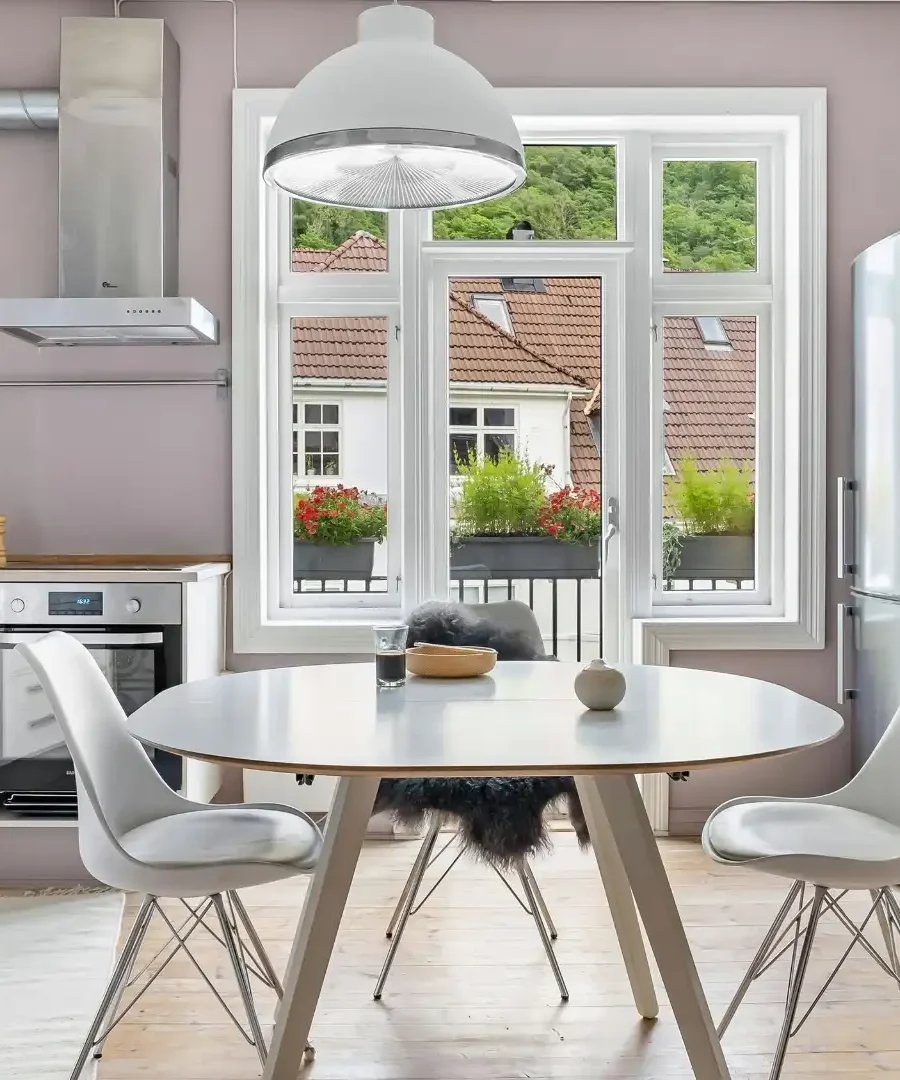
What Shape Table is Best for a Small Kitchen?
Introduction
The Importance of Choosing the Right Table for a Small Kitchen
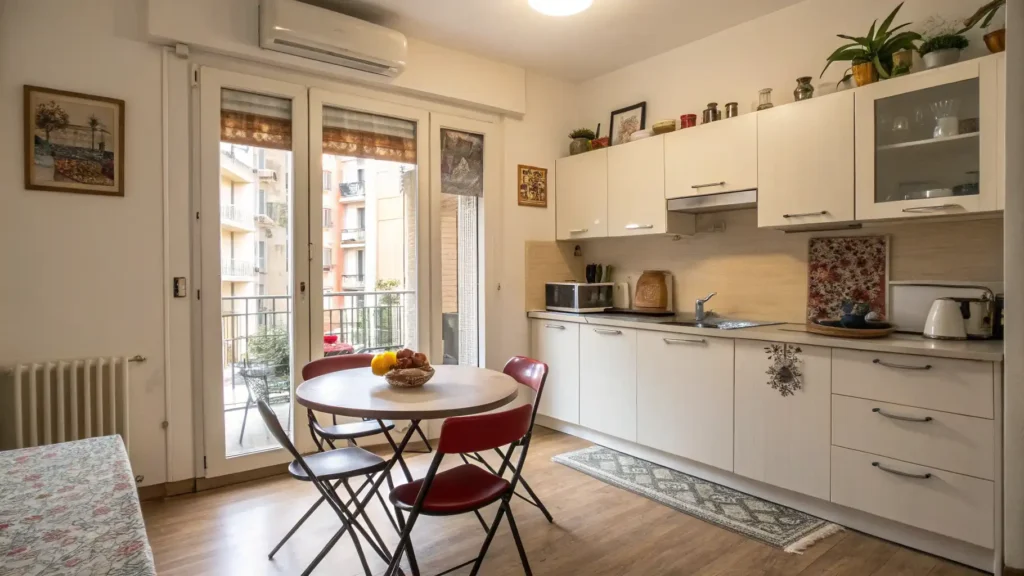
Understanding Your Small Kitchen Space
Assessing Your Small Kitchen Layout
Understanding your space is crucial. Start with a precise kitchen layout. Use a tape measure for accuracy and give yourself enough time to record every dimension carefully. Sketch your kitchen on paper and give attention to all walls, windows, and doorways. Identify potential table placement areas, which will give you a clear understanding of how to maximize your space. A clear layout helps you avoid mistakes since your measurements give you the confidence to make informed decisions.
Think about your daily routines. Consider where you spend the most time. A table should be easily accessible and give you enough room to move freely. It must not obstruct your movement, which will give your kitchen a more open feel. A thoughtful layout boosts overall functionality and gives you the ability to tailor your table choice to your lifestyle.Identifying Key Constraints
Space and Flow Considerations

Exploring Table Shapes for Small Kitchen
Round Tables: Advantages and Disadvantages
Round tables are a favorite for small kitchens because they offer a smooth, inviting design. Moreover, their curved edges prevent accidental bumps. In terms of seating, they are flexible, encouraging equal participation during meals. On the other hand, round tables may not fit every space. For instance, they can sometimes waste corner space. Therefore, always check your room dimensions first.
In addition to their practicality, round tables foster a warm ambiance. They are especially perfect for intimate family meals as they help create a friendly, circular conversation. Furthermore, their design softens hard kitchen lines. As a result, they work best in open, airy spaces.
Square Tables: Maximizing Corners
Square tables excel at using corners because they are perfect for snug kitchen spots. Their shape, in fact, makes the most of every inch and balances the room’s symmetry. Moreover, they fit neatly into small areas and allow seating on all sides. However, seating arrangements can sometimes be limited. Therefore, consider your overall kitchen design before choosing.
As a compact solution, a square table uses space efficiently and stylishly. Not surprisingly, many modern kitchens favor square tables since they blend function with a contemporary look. For this reason, they are a smart choice for maximizing results in a compact zone.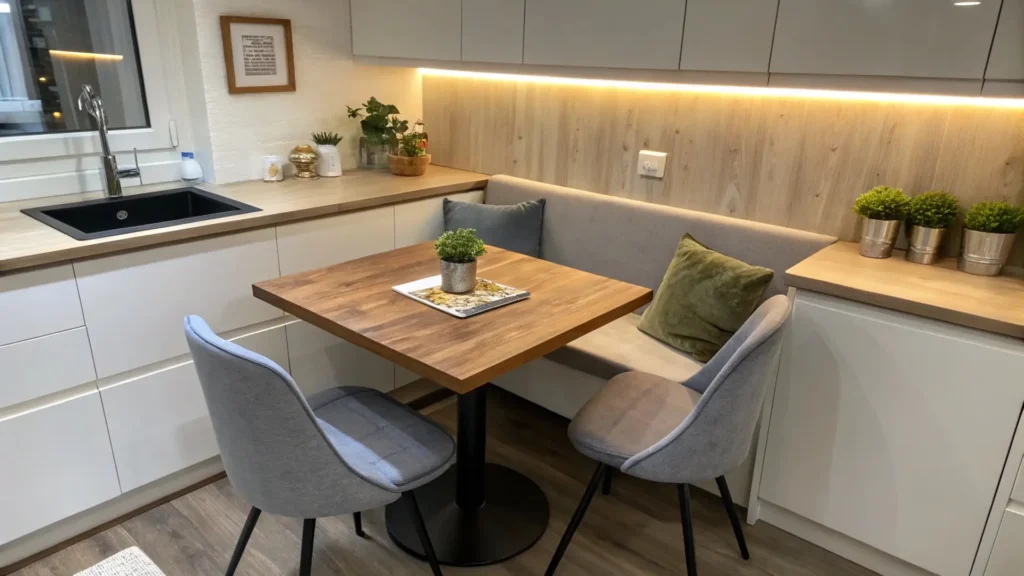
Rectangular Tables: Versatility in Form
Rectangular tables offer great versatility because they provide ample surface area for meals and projects. Additionally, they work well along walls or under windows. Their linear design, in particular, adds structure to the space. On the downside, rectangular tables can dominate small spaces. Therefore, they require sufficient clearance to avoid crowding. To prevent this, always measure before you choose a rectangular table.
These tables are ideal for busy families because they promote a natural flow of conversation. Furthermore, their shape supports organized seating. In addition to dining, rectangular tables can serve many purposes. They effectively offer a blend of function and classic style.
Oval Tables: Style and Functionality in Harmony
Oval tables provide a balanced option because their curved sides soften sharp room edges. Moreover, they combine elegance with practicality. In fact, oval tables often seat more people comfortably, making them ideal for kitchens with irregular spaces. Additionally, their design is both stylish and forgiving, seamlessly merging traditional and modern aesthetics.
As a result, an oval table creates a relaxed ambiance. Its shape, in particular, offers a less rigid seating arrangement, making it ideal for family gatherings. Furthermore, this table style suits various decor themes. For this reason, it is a popular choice for homeowners seeking versatility.
Functional and Aesthetic Benefits of Each Table Shape
Space Efficiency and Flexibility
Each table shape brings unique benefits. In small kitchens, space efficiency is crucial, so a table must maximize every available inch. For instance, round tables offer flexible seating options, while square tables make optimal use of corners. Similarly, rectangular tables provide structured surfaces, and oval tables blend space-saving with elegance. Ultimately, your table should adapt to daily needs.
Moreover, flexibility in design enhances overall functionality. For example, multi-use tables can expand and contract as needed, which suits dynamic lifestyles. As a result, a space-efficient table improves your kitchen’s livability and transforms tight spaces into inviting areas.Enhancing Social Interaction
We are wrong if we think a table is only a piece of furniture because it is the heart of family gatherings. In fact, tables create centers for conversation and connection. For example, round tables promote equal participation among diners, while square tables balance seating evenly. Similarly, rectangular tables organize group interactions, and oval tables offer a warm, inviting setting. Ultimately, your table brings people together.
Now, imagine sharing meals with loved ones. In this setting, your table becomes a natural conversation hub that inspires laughter and bonding. Moreover, a well-chosen table creates a welcoming atmosphere. As a result, it transforms everyday dining into memorable moments.Style, Design, and Material Options
Design matters as much as function because tables come in various materials and styles. For instance, wood exudes warmth and natural beauty, while metal tables add a modern, sleek touch. In contrast, glass tops create a feeling of openness. Additionally, each material offers a distinct look, so your table should match your kitchen decor.
When selecting a table, consider colors and finishes. For example, a light wood table brightens a small room, while dark tables create a dramatic statement. Meanwhile, metal and glass offer industrial or contemporary vibes. Ultimately, choose a design that reflects your personality since your table is a statement piece in your kitchen.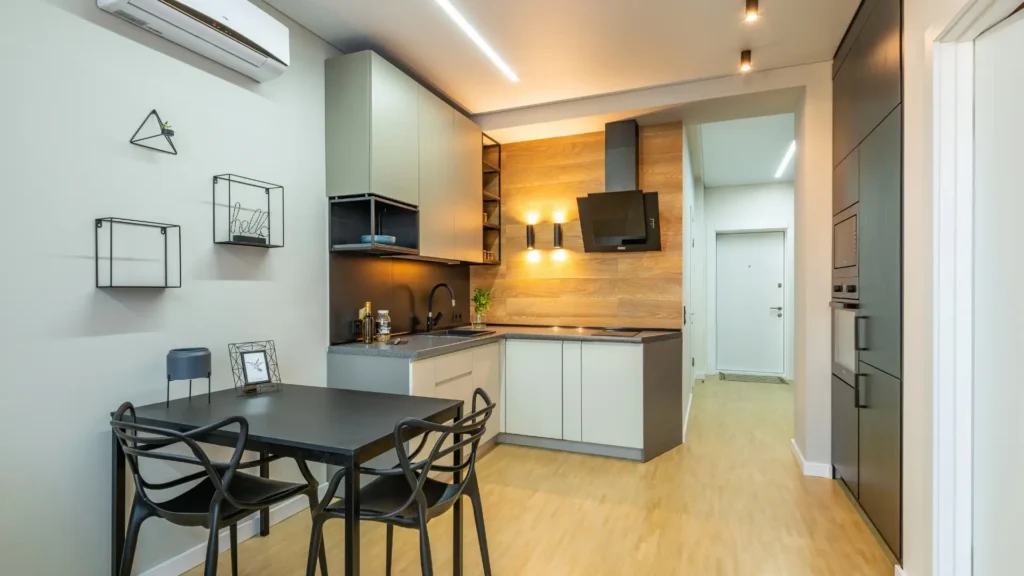
Practical Tips for Choosing the Perfect Table
Measure Your Space Accurately
Accurate measurement is the first step because it ensures a smooth shopping experience. Before you begin, always measure your space carefully using a tape measure for precision. Be sure to record every detail, including doorways and windows. After all, knowing your dimensions prevents costly mistakes. Ultimately, a well-measured space leads to a better choice, so trust your measurements to guide you.
Furthermore, precise dimensions ensure that the table fits well. To avoid issues, steer clear of tables that overwhelm your kitchen. Instead, choose a table that fits perfectly, boosting both form and function. In the long run, this small positive step safeguards your money and time.Consider Multi-Functional and Extendable Options
Multi-functional tables are ideal for small kitchens because they adapt to various needs throughout the day. For example, extendable tables offer extra seating for guests, but when not in use, they remain compact. Similarly, folding tables are a smart choice since they can easily be stashed away when not in use. In dynamic spaces, flexibility in function is key.
Additionally, consider your future needs, too. A table that adapts grows with your lifestyle. Moreover, multi-functional designs blend style and practicality, providing a modern solution to space constraints. Therefore, embrace the benefits of a table that transforms as required.Balancing Budget and Quality
Budget and quality are both important, so set a realistic budget before you begin. Fortunately, affordable tables can be both stylish and durable. In addition, quality materials ensure long-term use. Therefore, compare prices and features carefully since a quality table is a long-term investment. Ultimately, spend your money wisely on a piece that lasts by looking for a balance between cost and durability.
Keep in mind that your table is an investment in your home. Over time, quality tables often pay off as they reduce repair and replacement costs. For this reason, choose a table that offers lasting value and style.
Innovative Small Kitchen Table Ideas
Folding and Convertible Tables
Folding tables are a smart solution because they collapse neatly when not in use, which saves precious floor space. Similarly, convertible tables adapt to your changing needs — they expand for meals and contract for daily tasks. As a result, these tables are both practical and modern. In particular, their flexibility suits small, busy kitchens perfectly.
Not surprisingly, folding and convertible tables are popular choices. They provide an efficient solution for hosting guests. When folded, they leave ample space for movement. Therefore, their design is perfect for dynamic, small spaces. Ultimately, they combine functionality with contemporary style.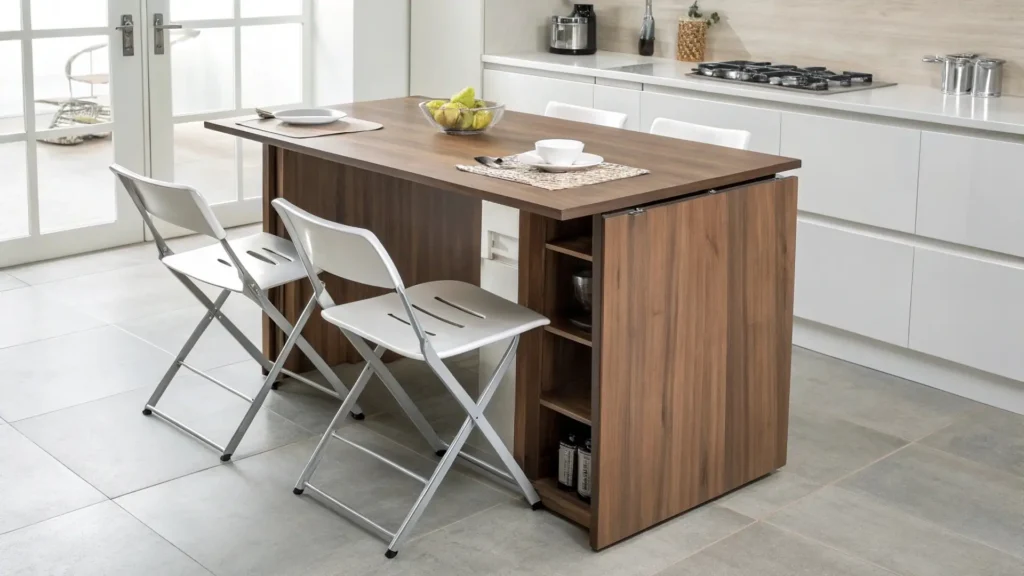
Custom Built-In Tables for Unique Spaces
Custom built-in tables offer a unique solution because they integrate seamlessly into your kitchen design. By maximizing every inch of space, a built-in table is tailored to your exact layout. Furthermore, custom tables are designed to fit your style, offering a bespoke solution that stands out. As a result, a built-in table adds both function and elegance.
Now, imagine a table that fits like a glove. Through thoughtful design, custom tables merge your kitchen’s features with smart storage, enhancing every corner of your home. Moreover, a tailored solution reflects your personality and taste. Therefore, consider a built-in table if you desire a unique, harmonious design.
Maintenance, Durability, and Investment
Easy Maintenance Tips
Maintenance is key to lasting beauty because a well-maintained table retains its charm over time. To make cleaning easier, choose a table with a smooth surface. For instance, wood tables may need special cleaners, while glass tables can be wiped down quickly. Additionally, follow the manufacturer’s guidelines for care since simple cleaning routines keep your table looking new. Ultimately, regular maintenance prevents wear and tear.
When cleaning, use gentle cleaners to preserve the finish. Avoid harsh chemicals that may damage surfaces. With just a little effort in care, you can extend the table’s life. As a result, you’ll enjoy a table that remains attractive through daily use.Long-Term Value and Durability Considerations
Invest in a table that offers long-term value because durable materials stand up to everyday use. For example, a sturdy table handles spills and bumps well. Moreover, quality craftsmanship makes a significant difference, as high-quality tables offer better longevity. Therefore, consider your busy lifestyle when choosing materials since a durable table saves money over time.
In addition to strength, your table should be both robust and stylish. Over time, durability enhances your kitchen’s value. Ultimately, a well-made table is a wise, lasting investment. So, choose materials that are built to last and impress.

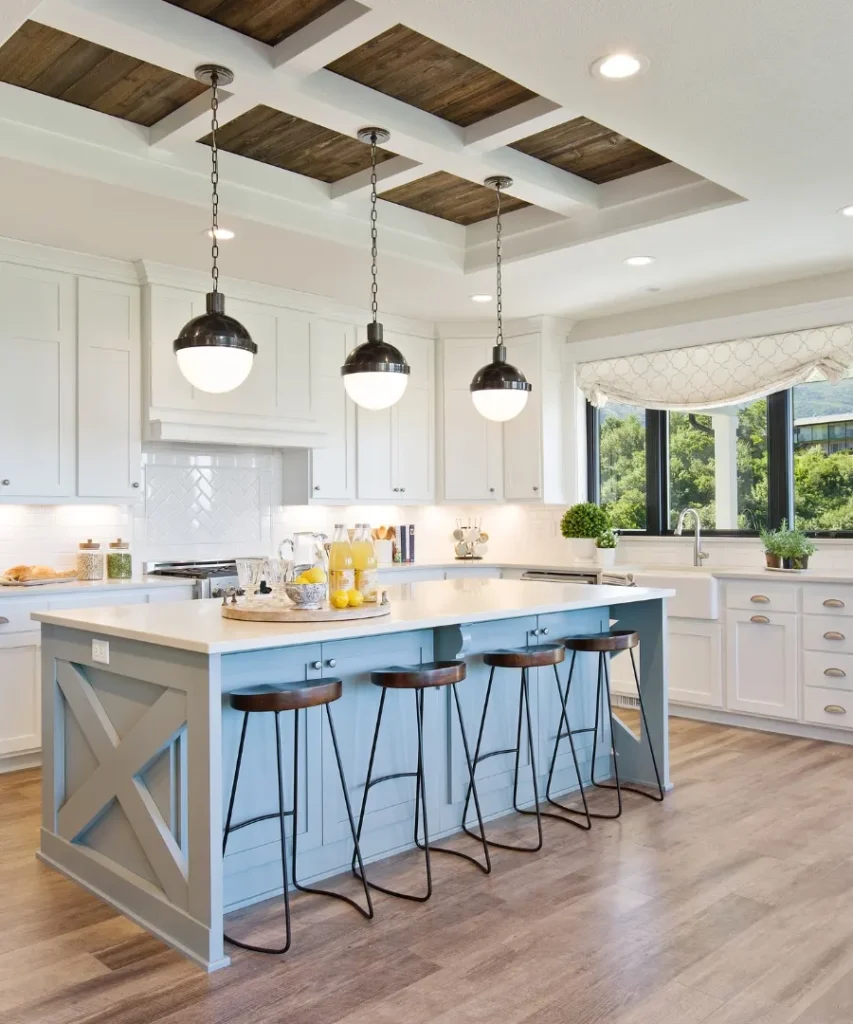

Pingback: Mistletoe
Pingback: Dicot